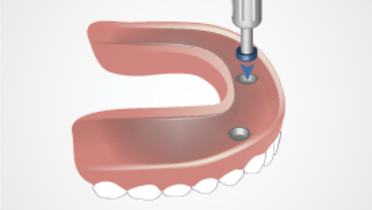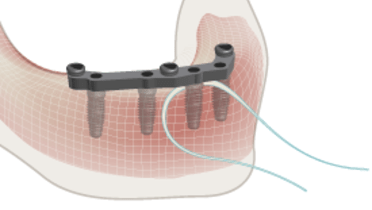-
0
Patient Assessment
- 0.1 Patient demand
- 0.2 Overarching considerations
- 0.3 Local history
- 0.4 Anatomical location
- 0.5 General patient history
-
0.6
Risk assessment & special high risk categories
- 5.1 Risk assessment & special high risk categories
- 5.2 age
- 5.3 Compliance
- 5.4 Smoking
- 5.5 Drug abuse
- 5.6 Recreational drugs and alcohol abuse
- 5.7 Parafunctions
- 5.8 Diabetes
- 5.9 Osteoporosis
- 5.10 Coagulation disorders and anticoagulant therapy
- 5.11 Steroids
- 5.12 Bisphosphonates
- 5.13 BRONJ / ARONJ
- 5.14 Radiotherapy
- 5.15 Risk factors
-
1
Diagnostics
-
1.1
Clinical Assessment
- 0.1 Lip line
- 0.2 Mouth opening
- 0.3 Vertical dimension
- 0.4 Maxillo-mandibular relationship
- 0.5 TMD
- 0.6 Existing prosthesis
- 0.7 Muco-gingival junction
- 0.8 Hyposalivation and Xerostomia
- 1.2 Clinical findings
-
1.3
Clinical diagnostic assessments
- 2.1 Microbiology
- 2.2 Salivary output
-
1.4
Diagnostic imaging
- 3.1 Imaging overview
- 3.2 Intraoral radiographs
- 3.3 Panoramic
- 3.4 CBCT
- 3.5 CT
- 1.5 Diagnostic prosthodontic guides
-
1.1
Clinical Assessment
-
2
Treatment Options
- 2.1 Mucosally-supported
-
2.2
Implant-retained/supported, general
- 1.1 Prosthodontic options overview
- 1.2 Number of implants maxilla and mandible
- 1.3 Time to function
- 1.4 Submerged or non-submerged
- 1.5 Soft tissue management
- 1.6 Hard tissue management, mandible
- 1.7 Hard tissue management, maxilla
- 1.8 Need for grafting
- 1.9 Healed vs fresh extraction socket
- 1.10 Digital treatment planning protocols
- 2.3 Implant prosthetics - removable
-
2.4
Implant prosthetics - fixed
- 2.5 Comprehensive treatment concepts
-
3
Treatment Procedures
-
3.1
Surgical
-
3.2
Removable prosthetics
-
3.3
Fixed prosthetics
-
3.1
Surgical
- 4 Aftercare
Provisionals/temporary prosthesis
Key points
- Provisional fixed restorations and temporary acrylic removable prostheses should be as close as possible to the final desired outcome
- Provisional fixed restorations and temporary acrylic removable prostheses should be designed to facilitate oral hygiene measures
- Patients should be informed about the limitations of provisional restorations and temporary prostheses
Fixed provisional restorations
Whenever possible, provisional restorations should be fabricated to simulate the desired definitive prosthesis in form, albeit with different and less durable materials. The lessened durability and functional capacity of a provisional restoration means that patients should avoid hard/crispy foods. Oral hygiene measures should be maintained. To reduce the chance of dislodging the restoration, dental flossing technique should be modified for cement-retained restorations so that floss is pulled out labially/buccally after use rather than snapped back through the proximal contact.
Fixed provisional restorations whether screw- or cement-retained may come loose. A delay between prosthesis loosening and re-tightening or re-cementation may compromise the long-term stability of the implants and surrounding soft and hard tissues. It must be emphasized to patients that if they suspect a fixed provisional restoration has come loose, that they must present as soon as possible to their dentist and not wait until the next scheduled appointment.
Temporary acrylic removable prostheses
These prostheses should be taken out at night and stored in a humid environment (water or denture cleanser). Prosthetic surfaces which do not face the mucosa can be brushed with a denture brush while those facing the mucosa should be kept plaque-free by rinsing or flossing underneath. In general, abrasives such as toothpaste and sodium bicarbonate should be avoided and just water or soapy water used when brushing a removable acryclic prosthesis.





